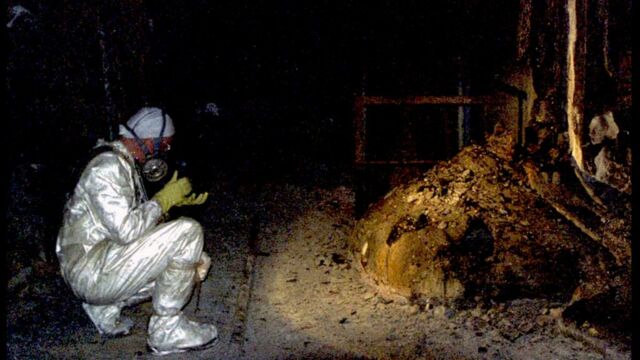The Chernobyl nuclear disaster which occurred on the 26th of April 1986 remains to this day the worst in history, ranked at level 7 which is the highest on the International Nuclear Event Scale (INES). This disaster had considerable consequences both on the human and environmental levels, and more than thirty years later Chernobyl continues to haunt people's minds.
Discover our latest podcast
In November 2017, the nuclear power station was fitted with a new container. This containment structure measures 108 meters high and 257 meters long with a weight of 32,000 tons, and is meant to ensure the safety of the site for the next one hundred years. Although the surface situation is now under control, the bowels of Chernobyl and its reactor number 4 are still a hell on earth, churning out radiation all year long.
A monstrous mass of corium
This is where the ‘elephant's foot’ can be found. This huge cluster so named because of its appearance is considered one of the most dangerous things in the world. It is actually a mass of ‘corium,’ i.e. a mixture of radioactive nuclear fuel, molten metal from equipment and other elements associated with the fuel.
This structure is located in the lower part of the reactor and was formed during the accident, when the heat reached more than 3,000 C° melting everything that was in the enclosure. This created monstrous tongues of molten magma that spread until they solidified, forming a mass of more than six feet in diameter and weighing hundreds of tons according to estimates.
It was while using a remote-controlled camera that the ‘elephant's foot’ was discovered. And a good thing too, since anyone exposed to it without protection would have put their life seriously in danger. In 1986, the level of radiation in the presence of the cluster was estimated at 10,000 Röntgens (R) per hour. For comparison, it is estimated that an exposure to 500 R for five hours is usually lethal for a human.
Following the accident, approaching the ‘elephant’s foot’ could be synonymous with a very quick death. Two minutes of exposure would be enough to affect the body's cells, causing haemorrhaging. A few more minutes would cause vomiting, diarrhea and fever. After five minutes, the exposed person would have only a few days to live.
A difficult thing to study
It took several years and a lot of courage for the engineers to find a way to get close enough to take samples to find out exactly what the ‘foot’ contains. It was only in 1996 that a photographer dared to approach it and the photos testify well to the danger of the structure. The photos are all grainy and of mediocre quality, and one of them even shows the shape of an individual who looks like a ghost.
These defects are not related to the performance of the camera but due to the intense radioactivity. According to Motherboard, the photographer in question, radiation specialist Artur Korneyev spent more time than anyone in the contaminated area. Despite cataracts and serious health problems related to his three years of irradiation, he is still alive. He is no longer allowed to access the site.
Thirty years after the Chernobyl disaster, radiation levels decreased in the exclusion zone which has a radius of about 12 miles around the plant. Nature seems to have taken over again but most of the region remains largely abandoned.
After the construction of the new containment structure, there is an even bigger challenge awaiting Ukraine, that of dismantling the nuclear power station and evacuating the fuels and various radioactive wastes that are still there. This particularly delicate, complex and expensive project could take years or even decades.















